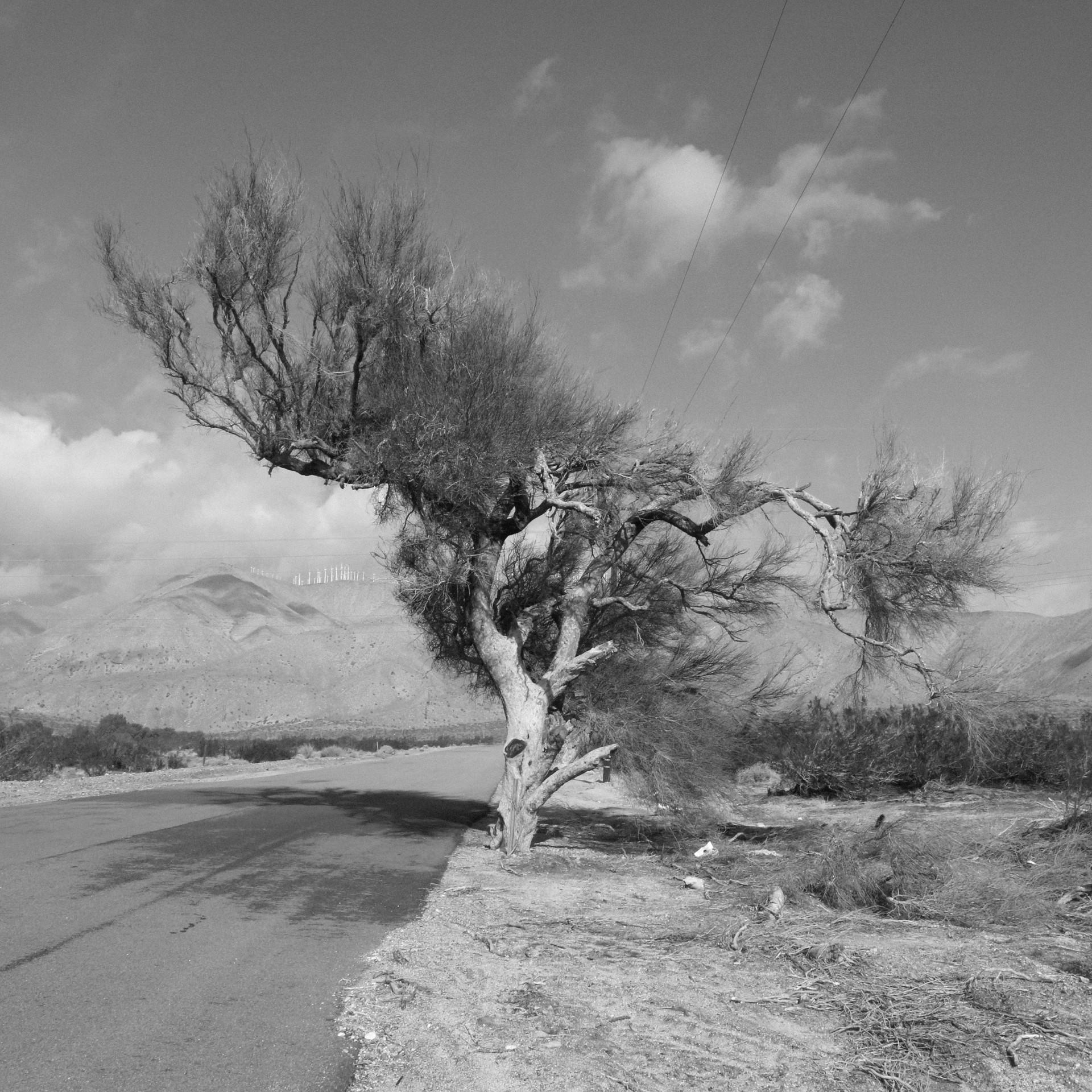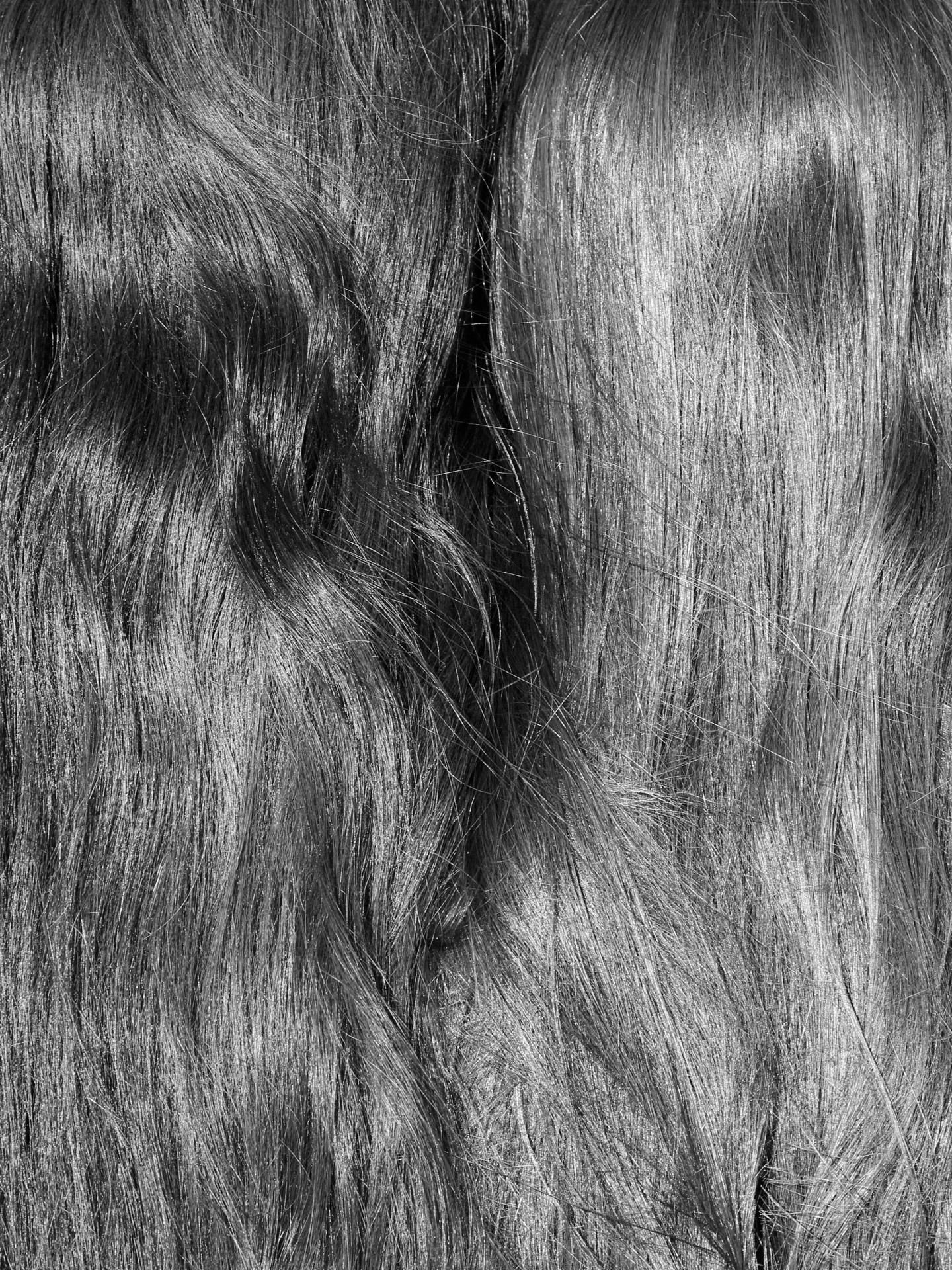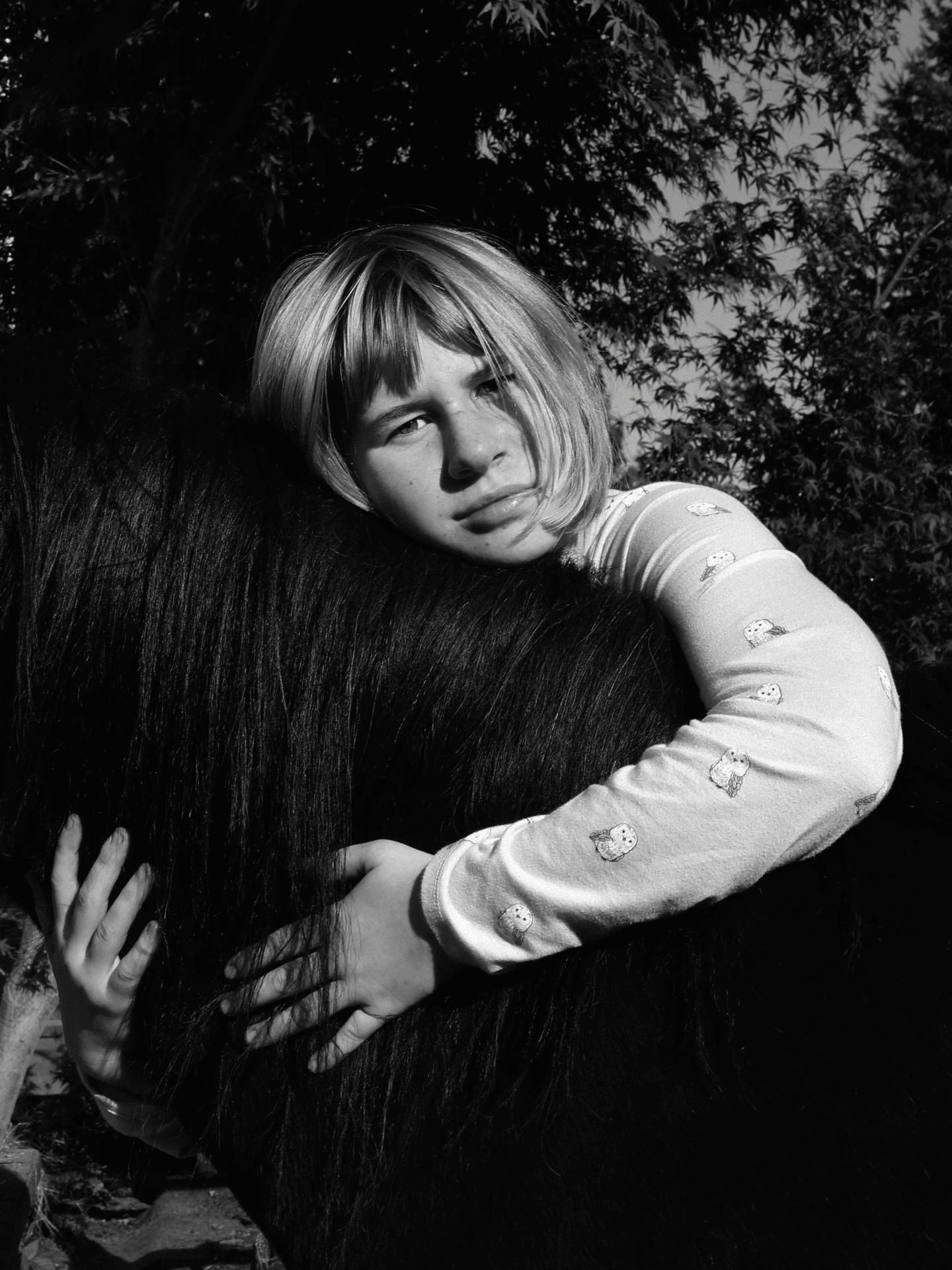Items Similar to David Smith with Voltri XV - Bolton 1963 by Dan Budnik
Want more images or videos?
Request additional images or videos from the seller
1 of 12
Dan BudnikDavid Smith with Voltri XV - Bolton 1963 by Dan Budnik1963
1963
About the Item
DAN BUDNIK (American, b. 1933-2020
David Smith with Voltr1-Bolton XV, Terminal Iron Works, Bolton Landing, N. Y. 1963
Vintage Print on Afga Paper, Silver gelatin, March 1963, printed 1992 by Igor Bakht
Paper: 24 x 20 inches
Image: 16.38 x 13 inches
Recto: signed in black ink in artist's hand
Verso: titled, dated, signed in graphite in artist's hand, printer information in graphite
State: unmounted.
Dan Budnik 1933-2020
As a photojournalist, Dan Budnik is known for his photographs of artists, but also for his photo-documentation of the Civil Rights Movement and of Native Americans. Born in 1933 in Long Island, New York, Budnik studied with Charles Alston at the Art Students League of New York (1951-53) and began his photography career as Philippe Halsman’s assistant. Working at Magnum Photos (1957-64) in 1963, Budnik persuaded Life Magazine to have him create a long-term photo essay showing the seriousness of the Civil Rights Movement, documenting the Selma to Montgomery march and other historical Civil Rights moments. Budnik went on to photograph for premier publications such as Life, Fortune, Look, Newsweek, Sports Illustrated and Vogue.
He has been a major contributor to eight Time-Life Wilderness and Great Cities series and received a 1973 grant from the National Endowment for the Arts for his work on the Hudson River Ecology Project and a 1980 grant from the Polaroid Foundation for Big Mountain: Hopi-Navajo Forced Relocation.
Biography
Pastaza, Ecuador, December 2004 Photo by Kresta King Cuther
Pastaza, Ecuador, December 2004 Photo by Kresta King Cuther
Dan Budnik, (b. 1933-died 2020), whose career as a photographer has spanned more than half a century, was most recent recipient, in 1998, of the prestigious American Society of Media Photographers Honor Roll Award, an accolade previously accorded to such eminent photographers as Man Ray, Edward Steichen, Walker Evans, Dorothea Lange, André Kertész, Ernst Hass, and Henri Cartier-Bresson. After studying with Charles Alston at the Art Students League of New York (1951-53), Budnik began his career as a Magnum photographer.
His photo-essays have appeared in periodicals that include Art in America, LIFE Magazine, Fortune, The London Sunday Times, Magazine, Look, Modern Photography, Newsweek, The New York Times Magazine, Réalités and Vogue. He has been a major contributor to many books, including six from the Time-Life Wilderness and Great Cities series. Budnik’s photographs appear in “The Museum: An Informal Introduction to The Museum of Modern Art” by Richard Schickel (1970). He is included in two seminal histories of photography: Nathan Lyons’ “Photography in the Twentieth Century” (1967) and “The Picture History of Photography from the Earliest Beginnings to the Present Day”, by Peter Pollack (1977).
Dan Budnik lives in Tucson, Arizona and is currently involved with creating a photographic record of ancient petroglyphs. Widely acclaimed for his photo-documentation of Native Americans (including his collaboration with Sandy Johnson on “The Book of Elders: The Life Stories of Great American Indians”, 1994), the Civil Rights Movement, and environmental issues. Budnik received a 1973 grant from the National Endowment for the Arts for his work on the Hudson River Ecology project and a 1980 grant from the Polaroid Foundation for Big Mountain: Hopi-Navajo Forced Relocation.
The scope of Dan Budnik’s documentation of major 20th century artists has yet to be fully recognized. In addition to David Smith, he photographed Georgia O’Keeffe, Lee Bontecou, Alexander Calder, John Chamberlain, Willem de Kooning, Helen Frankenthaler, Jasper Johns, Roy Lichtenstein, Robert Motherwell, Mark Rothko, and many others.
Dan Budnik’s photographs of David Smith first appeared as an April 5, 1963 photo essay for LIFE Magazine. They were first exhibited, in 1974, at the University Art Museum State University of New York, Albany, The Cooper Union for the Advancement of Science and Art, New York, and Rice University, Houston, Texas. The same exhibition circulated nationally under the auspices of the American Federation of Arts, from 1975-78. They have been widely published, and have become an essential part of the extensive body of literature on Smith. Twenty-four of Budnik’s photographs of Smith are reproduced in the catalogue of the current exhibition at The Solomon R. Guggenheim Museum, David Smith: A Centennial.
Selected Public Collections
Albright-Knox Art Gallery, Buffalo, New York
The Albuquerque Museum, New Mexico
Center for Creative Photography, The University of Arizona, Tucson
The Cleveland Museum of Art, Ohio
Guild Hall, East Hampton, New York
Indiana University Art Museum, Bloomington
Museum Ludwig, Cologne, Germany
Museum of Fine Arts, Houston, Texas
The Museum of Modern Art, New York
Museum of New Mexico, Santa Fe
Harry Ransom Center, The University of Texas at Austin
Roswell Museum and Art Center, New Mexico
Seattle Art Museum, Washington
Worcester Art Museum, Massachusetts
- Creator:Dan Budnik (1933, American)
- Creation Year:1963
- Dimensions:Height: 19.38 in (49.23 cm)Width: 13 in (33.02 cm)
- Medium:
- Movement & Style:
- Period:
- Condition:DAN BUDNIK (American, b. 1933-2020 David Smith with Voltr1-Bolton XV, Terminal Iron Works, Bolton Landing, N. Y. 1963 Vintage Print on Agfa Paper, Silver gelatin, March 1963, printed 1992 by Igor Bakht Paper: 24 x 20 inches Image: 16.38 x 13 inches.
- Gallery Location:Phoenix, AZ
- Reference Number:1stDibs: LU2623212945372
About the Seller
No Reviews Yet
Vetted Seller
These experienced sellers undergo a comprehensive evaluation by our team of in-house experts.
1stDibs seller since 2023
- ShippingRetrieving quote...Ships From: Phoenix, AZ
- Return PolicyThis item cannot be returned.
More From This SellerView All
- Western FlareLocated in Phoenix, AZWestern Flare Terrence Moore Photograph, Archival Pigment Print Size: 23 x 34.5 inches SPECIAL EDITION OF 25, PRICE FOR THE HOLIDAYS Terrence Moore has been up and down and over po...Category
1970s Contemporary Color Photography
MaterialsArchival Pigment
- Regalia Before The Consul by Greg SingleyLocated in Phoenix, AZGreg Singley , born 1950- Artist Statement: When the sun sets in the desert South West, things appear. This is the nature of what touches me about that la...Category
2010s Contemporary Figurative Paintings
MaterialsOil
- Painted Lodge by Greg SingleyLocated in Phoenix, AZGreg Singley , born 1950- Artist Statement: When the sun sets in the desert South West, things appear. This is the nature of what touches me about that la...Category
2010s Contemporary Figurative Paintings
MaterialsOil
- Crow Before The Eagle by Greg SingleyLocated in Phoenix, AZGreg Singley , born 1950- Artist Statement: When the sun sets in the desert South West, things appear. This is the nature of what touches me about that la...Category
2010s Contemporary Figurative Paintings
MaterialsOil
- The Bronc by Lon MegargeeLocated in Phoenix, AZLon Megargee 1883-1960 "The Bronc" Wood block print Signed in plate, lower right Image size: 9 x 10 inches Frame size 21 x 21.5 inches Creator of Stetson's hat logo "Last Drop from his Hat" Lon Megargee 1883 - 1960 At age 13, Lon Megargee came to Phoenix in 1896 following the death of his father in Philadelphia. For several years he resided with relatives while working at an uncle’s dairy farm and at odd jobs. He returned to Philadelphia in 1898 – 1899 in order to attend drawing classes at the Pennsylvania Academy of the Fine Arts. Back in Phoenix in 1899, he decided at the age of 16 to try to make his living as a cowboy. Lon moved to the cow country of Wickenburg, Arizona where he was hired by Tex Singleton’s Bull Ranch. He later joined the Three Bar R. . . and after a few years, was offered a job by Billy Cook of the T.T. Ranch near New River. By 1906, Megargee had learned his trade well enough to be made foreman of Cook’s outfit. Never shy about taking risks, Lon soon left Cook to try his own hand at ranching. He partnered with a cowpuncher buddy, Tom Cavness, to start the El Rancho Cinco Uno at New River. Unfortunately, the young partners could not foresee a three-year drought that would parch Arizona, costing them their stock and then their hard-earned ranch. Breaking with his romantic vision of cowboy life, Megargee finally turned to art full time. He again enrolled at the Pennsylvania Academy of Art and then the Los Angeles School of Art and Design during 1909 – 1910. The now well-trained student took his first trip to paint “en plein air” (outdoors) to the land of Hopi and Navajo peoples in northern Arizona. After entering paintings from this trip in the annual Territorial Fair at Phoenix, in 1911, he surprisingly sold his first oil painting to a major enterprise – the Santa Fe Railroad . . . Lon received $50 for “Navajos Watching the Santa Fe Train.” He soon sold the SFRR ten paintings over the next two years. For forty years the railroad was his most important client, purchasing its last painting from him in 1953. In a major stroke of good fortune during his early plein-air period, Megargee had the opportunity to paint with premier artist, William R. Leigh (1866 – 1955). Leigh furnished needed tutoring and counseling, and his bright, impressionistic palette served to enhance the junior artist’s sense of color and paint application. In a remarkable display of unabashed confidence and personable salesmanship, Lon Megargee, at age 30, forever linked his name with Arizona art history. Despite the possibility of competition from better known and more senior artists, he persuaded Governor George Hunt and the Legislature in 1913 to approve 15 large, historic and iconic murals for the State Capitol Building in Phoenix. After completing the murals in 1914, he was paid the then princely sum of roughly $4000. His Arizona statehood commission would launch Lon to considerable prominence at a very early point in his art career. Following a few years of art schooling in Los Angeles, and several stints as an art director with movie studios, including Paramount, Megargee turned in part to cover illustrations for popular Western story magazines in the 1920s. In the 1920s, as well, Lon began making black and white prints of Western types and of genre scenes from woodblocks. These prints he generally signed and sold singly. In 1933, he published a limited edition, signed and hard-cover book (about 250 copies and today rare)containing a group of 28 woodblock images. Titled “The Cowboy Builds a Loop,” the prints are noteworthy for strong design, excellent draftsmanship, humanistic and narrative content, and quality. Subjects include Southwest Indians and cowboys, Hispanic men and women, cattle, horses, burros, pioneers, trappers, sheepherders, horse traders, squaw men and ranch polo players. Megargee had a very advanced design sense for simplicity and boldness which he demonstrated in how he used line and form. His strengths included outstanding gestural (action) art and strong figurative work. He was superb in design, originality and drawing, as a study of his prints in the Hays collection reveals. In 1944, he published a second group of Western prints under the same title as the first. Reduced to 16 images from the original 28 subjects, and slightly smaller, Lon produced these prints in brown ink on a heavy, cream-colored stock. He designed a sturdy cardboard folio to hold each set. For the remainder of his life, Lon had success selling these portfolios to museum stores, art fairs and shows, and to the few galleries then selling Western art. Drawing on real working and life experiences, Lon Megargee had a comprehensive knowledge, understanding and sensitivity for Southwestern subject matter. Noted American modernist, Lew Davis...Category
Early 20th Century American Impressionist Figurative Prints
MaterialsWoodcut
- Dragon Fly by Greg SingleyLocated in Phoenix, AZGreg Singley , born 1950- Artist Statement: When the sun sets in the desert South West, things appear. This is the nature of what touches me about that la...Category
2010s Contemporary Figurative Paintings
MaterialsOil
You May Also Like
- Two DovesLocated in Detroit, MITwo Doves, Archival film photograph with frame, 2019 Raised in the American West, this region has resonated in mythical proportions within Antonia Stoyanovi...Category
21st Century and Contemporary American Modern Photography
MaterialsPhotographic Paper, Archival Ink
- TouchingLocated in Detroit, MITouching, Archival film photograph with frame, 2019 Raised in the American West, this region has resonated in mythical proportions within Antonia Stoyanovich...Category
21st Century and Contemporary American Modern Black and White Photography
MaterialsArchival Ink, Photographic Paper
- Palm DesertLocated in Detroit, MIPalm Desert, Archival film photograph with frame, 2019 Raised in the American West, this region has resonated in mythical proportions within Antonia Stoyanovich...Category
21st Century and Contemporary American Modern Landscape Photography
MaterialsPhotographic Paper, Archival Ink
- SistersLocated in Detroit, MISisters, Archival film photograph with frame, 2019 Raised in the American West, this region has resonated in mythical proportions within Antonia Stoyanovich’s own narrative and imag...Category
21st Century and Contemporary American Modern Figurative Photography
MaterialsArchival Ink, Photographic Paper
- Friend of the HorseLocated in Detroit, MIFriend of the Horse, Framed, Brown Wood, 2018 Raised in the American West, this region has resonated in mythical proportions within Antonia Stoyanovich...Category
21st Century and Contemporary American Modern Black and White Photography
MaterialsArchival Ink, Photographic Paper
- RowanLocated in Detroit, MIRowan, Archival film photograph with frame, 2018 Raised in the American West, this region has resonated in mythical proportions within Antonia Stoyanovich...Category
21st Century and Contemporary American Modern Portrait Photography
MaterialsArchival Ink, Photographic Paper
Recently Viewed
View AllMore Ways To Browse
Maasai Spear
Keith Richards Michael Cooper
Vintage Shoot The Moon
Alexander Mcqueen 1989
Photography Danse
Samuel Coleman
Bell Microscope
George Hurrell Portfolio
Michael Weinstein
Orcas Island
Vintage Bathing Caps
Vintage German Shepherd Prints
Ice Floe
Burt Reynolds
Ann Margret
Brad Ford
El Greco By Salvador Dali
Louis Freund





